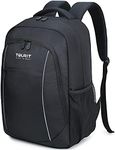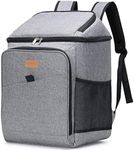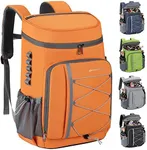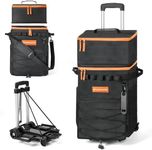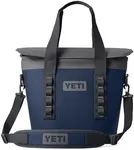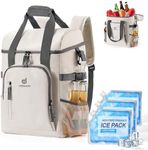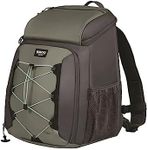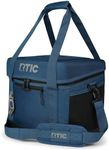Buying Guide for the Best Backpack Coolers
When choosing a backpack cooler, it's important to consider how you plan to use it. Whether you're going on a day hike, a beach outing, or a camping trip, the right backpack cooler can make a big difference in keeping your food and drinks fresh and cool. Consider factors like size, insulation, weight, and additional features to find the best fit for your needs. Think about how long you'll need to keep items cold, how much you need to carry, and how comfortable the backpack is to wear over long distances.CapacityCapacity refers to how much the backpack cooler can hold, usually measured in liters or cans. This is important because it determines how much food and drink you can carry. Smaller capacities, like 10-20 liters, are suitable for short trips or solo outings. Medium capacities, around 20-30 liters, are good for small groups or day trips. Larger capacities, over 30 liters, are ideal for family outings or longer trips. Choose a capacity based on the number of people you're packing for and the duration of your trip.
InsulationInsulation is what keeps the contents of your backpack cooler cold. It's crucial for maintaining the temperature of your food and drinks. Basic insulation might keep items cool for a few hours, which is fine for short outings. Mid-range insulation can maintain cool temperatures for a day, suitable for day trips. High-end insulation can keep items cold for multiple days, ideal for camping or extended trips. Consider how long you need to keep items cold and choose insulation quality accordingly.
WeightThe weight of the backpack cooler is important because it affects how easy it is to carry, especially when fully loaded. Lightweight coolers are easier to carry and are suitable for short hikes or casual outings. Medium-weight coolers offer a balance between capacity and portability, good for day trips. Heavier coolers might offer more features or better insulation but can be cumbersome for long distances. Consider your physical ability and the distance you'll be carrying the cooler when choosing the weight.
ComfortComfort refers to how the backpack cooler feels when worn. This is important for preventing strain or discomfort during use. Look for features like padded shoulder straps, back support, and adjustable straps for a more comfortable fit. Basic comfort features are fine for short trips. Enhanced comfort features are better for longer hikes or when carrying heavier loads. Choose a backpack cooler that feels comfortable to wear for the duration and type of your planned activities.
DurabilityDurability is about how well the backpack cooler can withstand wear and tear. This is important for ensuring the cooler lasts through multiple uses and different environments. Basic durability is suitable for occasional use or gentle environments. Mid-range durability can handle regular use and varied conditions. High durability is necessary for rugged use, such as hiking or camping in rough terrain. Consider how often and in what conditions you'll use the cooler to determine the level of durability you need.
Additional FeaturesAdditional features can enhance the functionality of a backpack cooler. These might include extra pockets, bottle openers, waterproof materials, or compartments for dry items. These features are important for convenience and versatility. Basic features are sufficient for simple outings. More advanced features can be beneficial for specific needs, like keeping items dry or organizing contents. Consider what extra features would be useful for your activities and choose accordingly.

